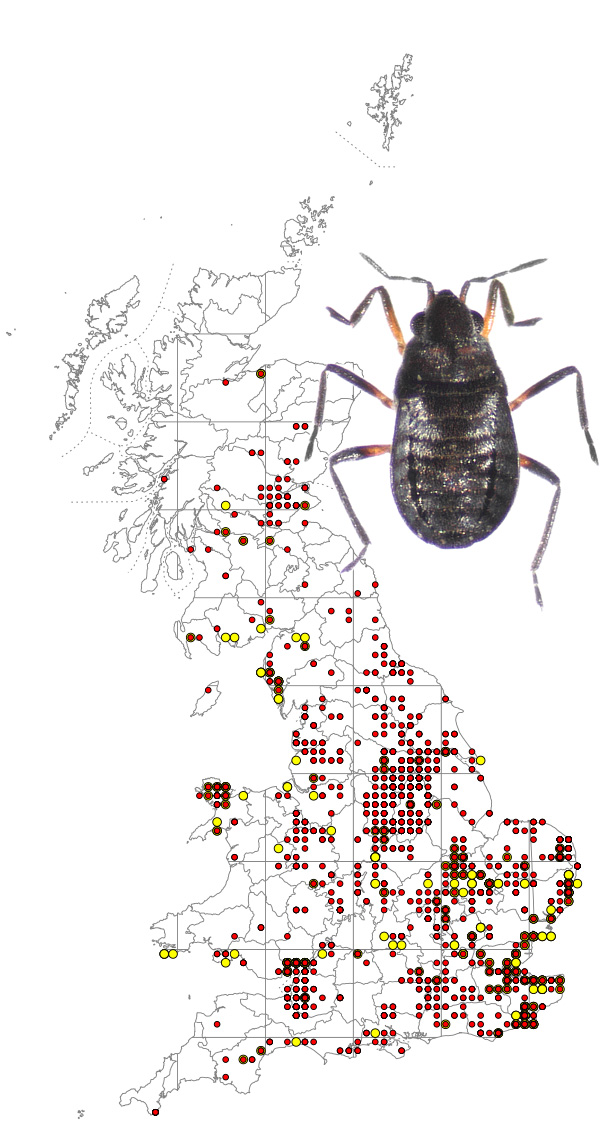This small and common bug occurs at the margins of lakes, pools and ditches where there is thick emergent vegetation with patches of open water and shade from overhanging trees or a steep bank. Adults overwinter and eggs are laid in April and May attached to floating debris including seeds. The nymphs pass through five stages (instars) and adults of the new generation appear by June, to be followed by one or sometimes two further generations in the same year.
The map is based on records from NBN Gateway, with yellow dots showing pre 1990 records, reds dots 1990 – 2015 records and red on yellow dots overlapping records. Microvelia reticulata is widespread in Ireland.
There are three species of Microvelia, M. reticulata being by far the most common and the smallest (length of wingless form 1.4 – 1.6 mm). In all three species wingless forms are more common than winged and can be distinguished by the structure of the thoracic segments. In M. reticulata the pronotum and mesonotum are visible and evenly rounded, while the metanotum is only visible at the sides, being covered by the mesonotum in the middle section of the body (see picture below). The interrupted brown band towards the front of the pronotum distinguishes M. reticulata from M. buenoi which has a continuous band (in M. pygmaea the band is also interrupted). The pronotum of M. pygmaea covers the mesontum entirely, the metanotum again being visible only at the sides, while in M. buenoi the mesonotum is visible but has a sinuate (or wavy) posterior border. Winged forms of Microvelia can usually be distinguished by the pattern of whiteish patches on the wing cases. The pattern in M. reticulata includes a central recurved or hooked patch (see below). The winged form of M. reticulata is 1.6 – 1.9 mm in length.


